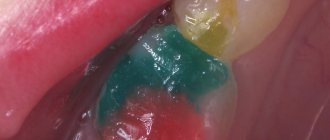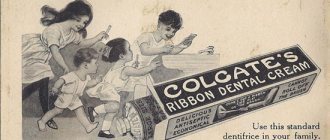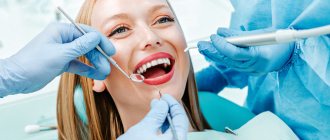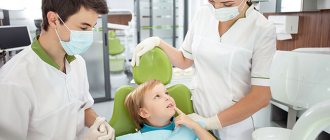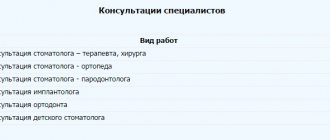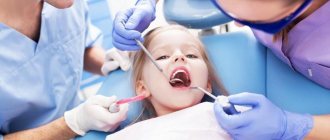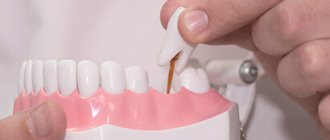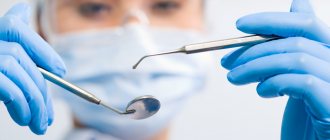| [organizational and legal form, name of organization, enterprise] | I approve [position, signature, full name of the manager or other official authorized to approve the job description] [day month Year] M.P. |
Job Description for Dental Assistant
This job description has been developed and approved in accordance with the provisions of the Labor Code of the Russian Federation and other regulations governing labor relations.
What is a Dental Assistant?
A dental assistant is the same person who meets and greets the patient, invites him to enter the office, offers to make himself more comfortable in the chair, and tells him where to put things away.
Read also: How to go and live in Italy from Russia
First of all, of course, he is an assistant to the attending physician. He provides the necessary tools and cooperates with the doctor during the entire work process.
But his role is also to create the most comfortable conditions for the patient. It is thanks to the assistant’s friendly smile, his care and attention that many people lose their fear of the upcoming procedure.
An attentive employee will always notice what the patient needs at the moment - adjust the chair, rinse his mouth.
Put away
The assistant cleans:
- in the patient’s oral cavity: rolls, balls, retraction threads, fragments, crumbs;
- contamination from the patient's face and glasses;
- contamination from working tools;
- moves the armrest and table of the dental unit at the end of treatment; instruments into the cassette from the dental unit table.
Typical shortcomings and errors in the “Remove” aspect
Assistant:
- waits until the doctor reminds him to help remove balls, rollers, retraction threads, fragments of hard tooth tissue, crumbs of filling material, dirt from the patient’s glasses and the doctor’s mirror from the patient’s mouth during treatment;
- does not notice dirt on the patient’s face remaining after treatment, hygienic cleaning, or taking impressions;
- does not warn the patient that he will remove something from his face, and does this unexpectedly for the patient;
- when necessary, does not comment on his actions for the doctor and the patient.
Doctor:
- acts for the assistant, removing balls, rollers, retraction threads, fragments of hard dental tissues, crumbs of filling material, dirt from the patient’s glasses and doctor’s instruments from the patient’s mouth;
- does not remind the assistant of the need for specific actions when he is not performing his duties.
Supply of tools and materials
The assistant gives the doctor: a carpule syringe with anesthetic, instruments, materials that are needed at this stage of treatment, a machine tip with a bur.
Rules for administering anesthetic:
- the assistant hands over the carpule syringe, clearly naming the anesthetic,
- the doctor intercepts the syringe,
- the assistant removes the protective cap from the needle,
- both partners verbally and non-verbally relax the patient.
Ten rules for filing instruments
- Never pass instruments over the patient's head or face.
- The assistant passes the instrument over the patient's chest so that he does not experience discomfort.
- In the case of transferring a surgical instrument (for example, forceps for tooth extraction), it is allowed to transfer it behind the patient's head.
- Always hand the instrument to the doctor with the working end towards the tooth being prepared so that the handle of the instrument is in the closest and most convenient position for gripping to the doctor’s leading hand.
- Handle sharp instruments or instruments with two handles (forceps, scissors) carefully to avoid injury to the patient or doctor.
- Avoid collision of the assistant's hands with the doctor's hands.
- The required instrument must be placed in the hands of the doctor in such a way as to ensure interception and prevent the instrument from falling.
- The instrument must be given and received in such a way that the doctor’s hand makes as little movement as possible.
- Do not pick up the instrument if it has fallen to the floor.
- If the instrument falls on the floor, then you should note to the patient that you will replace the instrument with a sterile one. Otherwise, the patient may view the instrument falling as a situation that prevents treatment from continuing properly.
Note. When the assistant puts the protective cap on the carpule needle after injecting the anesthetic, he needs to be as careful as possible and not rush, so as not to injure himself - a needle prick. Please remember that the needle can become infected.
take, intercept, hold
The assistant takes or intercepts the instrument from the doctor’s hands.
The doctor takes or intercepts the instrument from the assistant’s hands.
Typical shortcomings and mistakes in the “Take, intercept, hold” aspect
Assistant:
- does not know how to replace instruments from one to another, does not know how to hand instruments to the doctor;
- does not know or does not foresee what instrument the doctor will need at the next moment (for example, during restoration of a tooth with a composite material);
- does not come to the doctor’s aid during treatment when it is necessary to hold the patient’s cheek or tongue, matrix, or suture material;
- is in a hurry or abrupt in movements with instruments - there is a danger of injury to the patient or doctor;
- does not comment on his actions for the doctor and patient if necessary.
Doctor:
- relies only on himself, because he does not count on the effective help of an assistant or does not trust him;
- does not verbalize the request for the assistant, unreasonably relying on his intelligence.
Work schedule
The job responsibilities of a dental assistant can be roughly divided into two components. The first is precisely the workflow and its interaction with the doctor. In addition, the dental assistant must have time to put the office in order, order medications, instruments, consumables on time, disinfect and sterilize instruments. Fulfilling these duties cannot be at the expense of providing assistance to the physician when required.
An assistant, as a rule, comes to work before the doctor and leaves later than him - in order to have time to prepare the workplace before seeing patients and to always be in the doctor's support. Dentists usually work in shifts - before or after lunch. Assistants are also not in the clinic from dawn to dusk; their working day depends on the doctor’s schedule, but it is longer than that of their immediate superior.
Dry
Assistant: dries the surgical field with gauze balls, works with a water aspirator to remove bone chips and excess fluid from the surgical field in the patient's mouth. Liquid and solid residues in the patient's mouth are removed using evacuators (aspirators).
Evacuators are devices for removing water, saliva and solid residues that arise during the processing of dental tissue.
Evacuation is necessary so that the doctor can see the surgical field, and also to prevent the development of asphyxia in the patient. All modern dental units are equipped with tow trucks. For convenience in work, use the tips of evacuators - a vacuum cleaner and a saliva ejector.
A saliva ejector is used to remove saliva from the mouth during dental procedures without using a water jet. Has a small evacuation tip consisting of a flexible, easily replaceable, disposable plastic tube.
A vacuum cleaner is used to remove water, saliva and solid residues, as it has a greater vacuum force than a saliva ejector. It has a larger diameter than a saliva ejector, a working hose, and a more voluminous tip. Vacuum cleaner tips are reusable and disposable.
Eight rules for working with a vacuum cleaner and saliva ejector
- Do not hit the tip of the vacuum cleaner on your teeth, lips or gums - this can damage their tissue and cause discomfort to the patient.
- Avoid sucking soft tissues of the oral cavity into the handpieces (especially a vacuum cleaner) - this can contribute to the formation of a bruise or cause an unexpected reaction from the patient, even fear, he may recoil from unexpected sensations when the doctor works in the oral cavity with a rotating instrument.
- Dose the vacuum effect depending on the work being done and the amount of liquid and solid residues to be evacuated. This is done using a valve in both tips. A strong vacuum effect, for example when working with a saliva ejector in the sublingual space, can lead to dryness of the mucous membrane. The patient experiences dry mouth, sore throat and may interfere with the doctor’s work.
- The tips of the saliva ejector and vacuum cleaner should not be placed on the root of the tongue, in the area of the pharynx and soft palate - this may cause a gag reflex in the patient.
- Fix the tip of the vacuum cleaner in the patient’s mouth while the doctor works with the tip of the drill. When moving the tip of the vacuum cleaner, you may accidentally hit the tip of the drill and cause injury to the patient.
- Do not rest the tip of the vacuum cleaner on your gums, lips, tongue or teeth.
- Place the tip of the vacuum cleaner at a distance of one tooth from the tooth being prepared.
- When working as a tow truck, make sure not to block the doctor’s view and access to the surgical field.
Ways to grip the vacuum cleaner tip
A. Palm and thumb holding method (universal) - take the tip with your right hand so that the hose is on the thumb side, and the thumb and index fingers are on the shut-off valve. The tip is completely clamped into the palm. This gripping method is especially convenient when working in sectors II and III of the dentition.
B. The method of holding the “fishing rod” is to take the tip with your right hand so that the hose is on the little finger side, and the thumb is on the shut-off valve. This gripping method is usually used when working in the first sector of the dentition.
B. The method of holding a “writing pen” is to take the tip with your right hand in the same way as with method A, with the difference that the fingers - the little finger and the ring finger - do not clamp the tip, but are positioned along it. In this case, the thumb and forefinger are on the shutoff valve valve. This method is used when working in distant sectors - I and IV - of the dentition.
Note. The gripping methods depend on the type of shutoff valve. If the valve is screwed on (looks like a washer), then methods A or B must be used. If the valve is in the form of a lever and is controlled by one thumb, methods A or B must be used.
Techniques for gripping and installing a saliva ejector
The saliva ejector is grasped in such a way that the thumb and forefinger are positioned on the shut-off valve, and the remaining fingers along the tip. The hose is located on the little finger side. The gripping technique is similar to the gripping technique B of the tip of a vacuum cleaner.
When the assistant is busy preparing instruments or filling material, the saliva ejector is installed permanently, usually in the sublingual space. To secure the saliva ejector, the flexible tip is bent in accordance with the anatomical structure of this area of the lower jaw.
Typical shortcomings and mistakes in the “Dry” aspect
Assistant:
- does not have time to remove fluid from the patient’s mouth during treatment;
- in simple cases of treatment, does not change the roller balls in the patient’s mouth in a timely manner;
- does not know how to install an air aspirator (“vacuum cleaner”) conveniently for the doctor’s work - it blocks access to the working area in the oral cavity;
- causes discomfort to the patient by his actions, for example, with the tip of a vacuum cleaner he presses hard on the gums or hits the teeth;
- does not monitor whether the doctor is comfortable when working with aspirators;
- does not monitor the patient's condition.
Doctor:
- takes over the work with the water aspirator;
- does not trust the assistant to replace roller balls in the patient’s mouth in simple cases of treatment.
Dental Assistant Key Knowledge
The responsibilities of a dental assistant include knowledge of such important subjects as:
- laws and regulatory documents of the Russian Federation related to and regulating the work of healthcare institutions;
- principles according to which the provision of medical dental care is organized;
- anatomical structure and functioning of the human dentofacial system, biomechanics of the masticatory apparatus;
- theoretical training and practical skills in the treatment of basic dental diseases;
- the basics of organizing dental care for adults and children for the purpose of disease prevention;
- methods of preventing dental diseases and medications and other means by which preventive measures are carried out;
- how professional and individual oral hygiene is maintained and performed;
- methods of dental education of the population;
- labor protection standards, sanitary rules, as well as industrial safety rules and fire safety rules;
- Also, the assistant must comply with the internal labor regulations of the dental clinic or other dental medical institution in which he works.
Job Responsibilities of a Dental Assistant
The job description regulates the following responsibilities of a dental assistant:
- preparation of the dental office and materials necessary for the work to receive patients;
- mandatory compliance with sanitary and hygienic rules of the anti-epidemic regime, sterilization of equipment and instruments, rules for the storage and use of medications and equipment;
- weekly thorough general cleaning of the office, including washing walls and all other surfaces with disinfectants. The day of general cleaning is appointed by management;
- monitoring the cleanliness and order in the dental office;
- carrying out disinfection, preliminary cleaning and sterilization of necessary instruments and dressings;
- compliance with all doctor’s orders during patient visits;
- assisting the doctor in the process of receiving patients, filling out medical documentation;
- keeping records in the journals “Quality control of sterilizers” and “Quality control of preliminary pre-sterilization treatment”;
- At the end of the working day, the assistant cleans up medications, processes instruments, and turns off dental equipment. After this, he records everything in special journals, turns off the lighting, and locks the office;
- if any of the equipment does not work, makes an entry in the fault log located in the registry so that they can be corrected in a timely manner;
- interaction with fellow employees of this medical institution;
- meeting the patient near the reception desk, friendly greeting, accompanying the patient to the office;
- monitoring the correctness of filling out medical documents (presence of signatures, patient filling out documents, etc.);
- if necessary, providing first emergency aid to the patient;
- control over the availability of consumables, registration of necessary requests;
- Assisting administrators in calling patients with reminders about unfinished treatment and appointments.
Shine with curing lamp
The doctor applies an adhesive system into the tooth cavity (or onto a ceramic structure), places a portion of light-curing material, restoring the tooth cavity.
The assistant monitors the doctor’s actions in the patient’s oral cavity; prepares the solar lamp, setting the desired mode; highlights a portion of the introduced material.
Typical shortcomings and errors in the aspect “Shine with a polymerization lamp”
Assistant:
- did not prepare the polymerization lamp for reception, it is turned off from the network or the battery is discharged;
- works with a lamp without protective glasses or a shield, violating personal safety precautions;
- illuminates the material in less time than is necessary in this case;
- presses the nozzle of the polymerization lamp to the filling material;
- highlights the material from the wrong side.
Doctor:
- takes upon himself the illumination of a portion of the material, without trusting this to an assistant;
- does not verbalize instructions to the assistant on how best to cover the material in a given case, unreasonably relying on his intelligence;
- violates safety regulations by monitoring the actions of an assistant while illuminating material without protective glasses or a face shield;
- does not explain to the patient (in justified cases) at what stage the tooth restoration is carried out and how long until completion.
Records management
The second component of the responsibilities of a dental assistant is maintaining reporting and current documentation. The assistant fills out patient charts (in paper or electronic form) and keeps various logs:
- on safety precautions;
- medication accounting;
- cleaning;
- disinfection and sterilization;
- equipment serviceability.
Entries in these documents must be made in a timely manner; patient cards are filled out immediately - at the appointment.
Peri-medical activities of a dental assistant
The range of responsibilities assigned to a dental assistant depends greatly on the doctor himself, as well as the services he provides. Thus, general practitioners who deal with surgical and therapeutic manipulations, prosthetics, orthodontics and orthopedics have more stringent requirements for assistants. The responsibilities of dental assistants also differ due to the fact that they may be involved in the treatment process to varying degrees. Paramedical care consists of performing the following types of work:
- compliance with sanitary standards in the office, timely disinfection, weekly general cleaning (washing floors, walls, ceilings, windows, furniture and equipment);
- preparing instruments for use, disinfecting them, sterilizing them;
- cleaning the doctor’s workplace at the end of the working day, including disinfection of handpieces, turning off equipment;
- keeping records of medications, consumables and dressings, issuing them to the doctor, monitoring expiration dates and leftovers;
- maintaining documentation, registering patients, filling out various reporting forms, making entries in journals on cleaning, serviceability of equipment, sterilization of instruments.
And, of course, the main responsibilities of a dental assistant are to quickly carry out the doctor’s orders during work, meet patients at the reception desk and escort them to their chair.
Track
The assistant monitors during the treatment session:
- the start and end time of the appointment;
- the patient's condition;
- the speed of the doctor’s actions;
- over time during individual manipulations: applying orthophosphoric acid, fluoride gel, taking impressions, carrying out the whitening procedure, etc.;
- for the availability of the necessary materials, tools, ball rollers on the table of the dental unit;
- ensuring the cleanliness of the doctor’s dental instruments (use a gauze ball to remove traces of contamination from a dental mirror, plugger, smoother, etc.);
- behind my actions: “Am I doing everything as I should”, “Am I having time to help the doctor”, “Am I disturbing him”, “Am I bothering the patient with my actions.”
Typical shortcomings and errors in the “Track” aspect
Assistant:
- does not pay attention to the patient’s well-being during treatment because he does not have time to do this or does not see signs of his physical discomfort;
- waits for reminders from the doctor regarding the preparation of what is needed for the next stage of treatment;
- waits for the doctor’s reminders to monitor the timing of the manipulation;
- waits for instructions to put dental instruments and table in order;
- does not monitor his actions to check their correctness, direction, speed, synchronized with the doctor’s actions.
Doctor:
- takes complete control over the patient's well-being, not trusting the assistant or not considering it necessary to include him in interaction with the patient.
Self-test questions
- What does the concept of “coordination of the actions of the doctor and the assistant” include?
- What does the patient experience and what conclusions does he draw from observing the coordinated actions of the doctor and assistant during treatment?
- Do you find it appropriate to report to the doctor in the presence of the patient before starting treatment that everything is ready for the appointment?
- Why does the doctor equip himself before starting treatment?
- What, how and in what sequence do the doctor and assistant do during the equipment before starting treatment of the patient?
- What is special about helping a surgeon put on gloves?
- When should doctor’s gloves be disinfected during an appointment?
- Why do the doctor and assistant need to properly occupy their work area?
- What is the sequence of actions when installing and turning on the light of the dental unit lamp before starting treatment?
- When should the assistant turn off the dental unit light during treatment?
- What does the assistant give to the doctor during treatment? When should he voice what he is giving to the doctor?
- What are the biggest mistakes assistants make when presenting instruments to the doctor?
- What does an assistant replace during a therapeutic appointment?
- What can cause physical and psychological discomfort to the patient during “replacements”?
- What modes of which devices does the assistant regulate during the treatment process?
- What actions of an assistant when working with a vacuum cleaner and saliva ejector can injure the patient and how?
- What mistakes does the assistant make that harm him when he works with the curing lamp in the patient's mouth?
- What does the assistant monitor during the treatment appointment?
- In what ways does the assistant interfere with the doctor’s work with the patient?
- Why doesn't the assistant think about how and when he interferes with the doctor's work?
Light adjustment
Assistant:
- directs the light of the lamp so that it directly illuminates the area in the patient’s oral cavity required for examination or treatment;
- sets the lighting differently for each jaw: when working on the lower jaw, the light is directed straight down; when working on the upper jaw, the light should be directed at an angle;
- makes sure that the light does not shine in the patient’s eyes;
- promptly turns on, turns off and adjusts the brightness of the lamp depending on the stage of treatment (for example, when selecting burs or working with light-curing materials, the lamp light should be dimmed).
Notes:
- the assistant should be able to reorient or turn off the lamp at any time, so it should be at a distance no further than his outstretched arm;
- The assistant turns off the lamp light in the following cases:
- every time a doctor talks with a patient, discussing a treatment plan (prosthetics), giving recommendations, making a prognosis;
- when determining the color of a future restoration or prosthesis, when natural lighting is needed.
Typical shortcomings and errors in the “Light adjustment” aspect
Assistant:
- incorrectly sets the light of the installation lamp - the area of the surgical field is not illuminated or is not illuminated enough;
- does not dim the brightness of the lamp when working with light-curing materials in the patient’s oral cavity;
- does not turn off the lamp light when it is possible to give the patient a rest (for example, when changing the bur).
Doctor:
- adjusts the light of the lamp independently, not trusting the assistant to do this or anticipating his actions when he is slow.
Disinfection of gloves
The assistant disinfects:
- your gloves and the doctor’s gloves before starting the treatment;
- the doctor's gloves every time during the appointment, after he touched the lamp, chair, medical card, picture and other objects.
The procedure for disinfecting gloves in the patient’s field of view:
- the doctor presents his gloved hands folded in the shape of a boat,
- the assistant treats the doctor’s gloves with a disinfectant spray,
- the assistant processes his gloves.
Typical shortcomings and errors in the aspect of “Disinfection of gloves”
Assistant:
- disinfects gloves out of sight of the patient;
- disinfects gloves by spraying the spray on the patient’s face;
- delays in processing gloves, forcing the doctor to disinfect his gloves himself.
Doctor:
- without waiting for an assistant, he disinfects his gloves himself;
- presents an outstretched arm with a vertically raised palm for processing;
- based on the patient, does not ask the assistant to disinfect gloves after touching anything;
- touching something, disinfects gloves out of sight of the patient or without voicing this action to the patient.
Responsibility
The dental assistant is responsible for:
4.1. For non-fulfillment or improper fulfillment of the duties provided for in these instructions - within the limits determined by the labor legislation of the Russian Federation.
4.2. For offenses committed in the course of carrying out their activities - within the limits determined by the current administrative, criminal and civil legislation of the Russian Federation.
4.3. For causing material damage to the employer - within the limits determined by the current labor and civil legislation of the Russian Federation.
The job description has been developed in accordance with [name, number and date of document].
Equipment
The sequence of actions carried out in the patient’s field of view should be as follows:
- the assistant puts on a mask,
- then hands the mask to the doctor,
- the doctor puts on a mask,
- the assistant puts on his gloves,
- the doctor alternately offers his hands to the assistant so that he can help put on gloves,
- The assistant helps the doctor put on gloves.
Note. The equipment of the assistant and the doctor in the field of view of the patient should be carried out in the following cases: the patient has not been to the dentist for a long time and, presumably, has no idea about modern methods of ensuring the safety of treatment or has forgotten about them; suspicious person - carefully observes the actions of the medical staff; demanding patient - interested in the progress of treatment, asks questions about its safety, etc.
Equipment should be carried out out of sight of the patient if it is unpleasant for him, which can be guessed by his behavior; if he has been treated by you several times and knows that you are taking measures to ensure the safety of treatment, in particular, you have already demonstrated the equipment.
So, the assistant equips the doctor after putting on the gloves for himself.
How to help a therapist put on gloves. The assistant should take the glove to be put on by the cuff with his fingertips and turn it out, covering his fingers with the cuff, while both thumbs should be moved to the side. The glove being put on should be turned towards the doctor with the palm side. After the doctor puts on the glove, the assistant straightens the cuff on his hand.
How to help a surgeon put on gloves. The assistant hands the doctor gloves, having first put on his own. To avoid infection of the sterile surface of the doctor’s gloves, the assistant takes the glove by the cuff, while placing the tips of the index and middle fingers of both hands inside the glove, stretching the cuff, and pressing the ring and little fingers to the palms of his hands so as not to touch the doctor’s sterile gloves.
When putting on gloves, you should present them with the palm side towards the doctor, guided by the thumb. After the doctor puts on the glove, he raises his hand up, and the assistant, removing his fingers from the glove, straightens the cuff.
Typical shortcomings and errors in the “Equipment” aspect
Assistant:
- equips himself and equips the doctor behind the patient’s back (when this is not required);
- prepares gloves for the doctor of the wrong size;
- delays in preparing for treatment, forcing the doctor to equip himself;
- incorrectly (inconveniently) hands the glove to the doctor, so it is not possible to put the glove on completely.
Doctor:
- without waiting for an assistant, puts on gloves independently;
- equipped behind the patient's back (when it is not required).
Note. Some participants in the “doctor-assistant” dyad each outfit themselves independently, not only during a therapeutic or orthopedic appointment, but also during a surgical one, which is incorrect and is an anti-marker for the patient’s safety of treatment. The psychological significance of the equipment is lost: the patient is deprived of the opportunity to see the refinement of this process and the respectful attitude of the assistant to the doctor.
Preparing for treatment
An assistant prepares for treatment. The way he carries it out will affect all aspects of the treatment process. Poor preparation for treatment does not allow the medical staff to act in a coordinated manner - there will be failures, pauses, and nervousness. Good preparation makes it possible to ensure consistency and demonstrate it to the patient.
The assistant takes into account the upcoming treatment procedures, the specifics of this appointment, as well as all the “duty” factors of the treatment process. He cooks:
- anesthesia - application and injection;
- tips - turbine and micromotor;
- burs - carbide and diamond, for the turbine tip and micromotor;
- equipment for work - radiovisiograph, electroodontometer, apex locator, piezon, physiodispenser, etc.;
- medical instruments - basic (mirror, probe, tweezers), according to the specifics of the appointment (for example, when restoring a tooth at a therapeutic appointment - a set of smoothers and pluggers). It is discussed with the doctor before the patient begins to see what additional instruments may be needed during a particular treatment;
- materials - medicinal and filling;
- dressing;
- patient medical records, referral forms;
- booklets and leaflets on the problems of patients of a specific dental profile (for example, “Treatment of caries”, “Tooth restoration with modern composite materials”, “Professional oral hygiene”, etc.);
- stationery.
The assistant’s “report” to the doctor makes a very good impression on the patient. The phrase is pronounced at the moment when the patient is given a pause to take a comfortable position in the chair.
“Maria Ivanovna! The office is ready for reception." The doctor reacts: “Thank you, Natalya! Let's get to work."
Next, the doctor indicates (reminds) the patient an action plan: what will be done, what technologies and materials will be used; reminds you of the cost of treatment agreed upon during the consultation or clarifies it in order to avoid misunderstandings after completion of treatment.
Typical shortcomings and mistakes in the “Preparation for treatment” aspect
The assistant lags behind in delivering what the doctor needs.
Causes:
- does not know what will be needed during the treatment process, and therefore waits for the doctor’s instructions before performing certain manipulations;
- does not know how to prepare the devices for operation (for example, he does not know how to “load” the patient’s card into the radiovisiograph in order to take an image; he does not know how to connect a stationary piezo and that powder and distilled water are needed for its operation);
- the office does not have what is needed, or what is needed for the appointment is not prepared in advance.
Doctor:
- prepares the necessary tools, materials, devices for work himself, without waiting for the help of an assistant (he himself takes out the necessary smoothing iron, bur, matrix, cement, composite material, etc. from the desk drawer);
- does not verbalize his requests to the assistant at the right moment, relying on his intelligence; as a result, a pause occurs and tension appears in the work of the doctor with the assistant.
Place of work
Now I work in a laboratory that is not attached to any clinic. We take orders from all over the city and region from dentists who do not have their own dental technicians. The managers, husband and wife, are dental technicians themselves. Employees are valued, encouraged to strive for development, paid for for courses, and supported in their interest in work. The atmosphere in the team is very friendly, there are no misunderstandings or resentments towards each other, and for me this is a huge plus.
The team is small - 10 people. All the guys are young, with 2-9 years of work experience.
